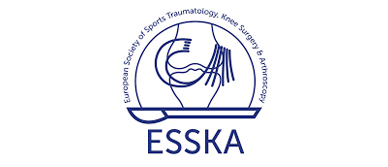The knee is a complex joint that consists of bone, cartilage, ligaments, and tendons that make joint movements easy but at the same time it is more susceptible to various kinds of injuries. Knee problems may arise if any of these structures get injured by overuse, suddenly during sports activities, degenerative diseases such as arthritis, or through traumatic injuries. These conditions may affect the bones & joints and impair the mobility as well as the quality of life of the patients.
All these conditions require the appropriate treatment, which may be surgical or non-surgical, to restore to normal function. Non-operative orthopaedic treatment options include non-pharmacological and pharmacological interventions. They are aimed at providing symptomatic relief and improving the quality of life of patients. They can be used as a treatment option to treat certain conditions or to decrease pain as well as promoting functioning and quality of life after the surgical treatment.
Nonpharmacological Intervention
Nonpharmacological interventions may range from simple lifestyle modification to physical exercises and rehabilitation programs. Some of the non-pharmacological interventions include:
Weight reduction and physical exercise - Lifestyle changes resulting in weight loss in obese individuals and engaging in appropriate physical exercises play an important role in the prevention and management of knee conditions. The optimal Body Mass Index (BMI) should be 18.5 to 25. BMI of 25-29 is considered overweight and BMI over 30 is considered obese.
Transcutaneous Electrical Nerve Stimulation
The transcutaneous electrical nerve stimulation (TENS) method involves the use of low-voltage electric impulses to relieve pain. It is believed to provide pain relief by inhibiting the conduction of pain impulses to reach the receptors in the brain and spinal cord. The patient is made to wear a device and this device generates the impulses that offer pain relief. The frequency of the impulses, duration of treatment, and location of the electrical electrodes on the body are decided by your physician based on the severity of the condition as well as the response of the patient. Using the device for at least 4 weeks may provide better pain relief. It should not be used by patients with a cardiac pacemaker or cochlear implants, or those suffering from epileptic conditions. It should also not be used during pregnancy.
Thermotherapy
Thermotherapy involves the application of hot or cold packs at the affected area. There is some evidence to support the use of cold therapy in providing symptomatic relief. It is contraindicated in individuals with thermoregulatory impairments. Individuals having peripheral vascular disease, diabetes, cardiovascular disease, and hypertension, or who are pregnant should use it with caution.
Acupuncture
This method involves the insertion of sterile needles into specific acupuncture points or pressure points. It is believed that the insertion of needles at specific points restores the flow of “qi”, a form of energy, and thereby relieves the pain. A modification in acupuncture is electro-acupuncture where the needles are stimulated by an electrostimulator. Acupuncture performed by trained professionals is considered to be safe and offers pain relief. However, it may have certain risks if treated by untrained professionals.
Patellar Taping
Patellar taping is used as a short-term treatment particularly when performing normal activities deteriorates the knee condition. The principle behind the treatment is the stabilisation of the knee joint by altering the distribution of stress and joint pressure. The response depends on the strapping technique used and the time for which it is strapped.
Massage Therapy
It is one of the oldest methods of treatment and reduces pain by increasing the circulation of blood and lymph as well by reduction of muscle tension or because of the therapeutic effect of the touch.
Pharmacological Interventions
Pharmacological interventions include the management of pain using medicinal preparations such as pain-relieving capsules or injections.
Nonsteroidal Anti-Inflammatory Drugs
These are known as NSAIDs and are found to be effective in reducing pain and inflammation of the knee. Caution must be taken while using NSAIDs. They can cause a range of side effects, chances of which increase with the concomitant use of diuretics, angiotensin-converting enzyme inhibitors, angiotensin 2 receptor blockers, anticoagulants, or oral corticosteroids.
Steroid Injections
These injections of steroids are given directly into the affected joint for severe pain when the use of NSAIDs does not bring much relief. Steroids are very strong anti-inflammatory drugs and may work effectively in acutely inflamed joints. Local analgesics that prevent the sensation of pain are sometimes given along with steroids in the same shot to bring relief quickly.
Weak and Strong Opioids
Opioids are prescribed when the use of simpler analgesic medications do not offer symptomatic pain relief, if other treatments have intolerable side effects or when surgery is delayed or contraindicated. Though they offer better pain relief than NSAID’s they are known to cause side effects such as dry mouth, nausea, vomiting, dizziness, and constipation. Overdose may lead to respiratory depression. The dose is reduced slowly otherwise it can cause withdrawal effects. Stronger opioids are also known for addiction and should be used in the short term as directed.
Disease-Modifying Anti-Rheumatic Drugs and Biological Agents
Disease-modifying anti-rheumatic drugs (DMARDs) aim at halting the progression of the disease and offer symptomatic relief. Biological agents are the antibodies against the disease-causing agents manufactured using genetic engineering technology. These agents are recommended in individuals with severe disease conditions. Other treatments – Your physician may recommend the use of braces and orthoses, prescribe chondroitin sulfate, electromagnetic therapy, vitamin supplements, herbal, and other dietary therapies. Discuss with your physician about these therapeutic options before initiating the treatment.












